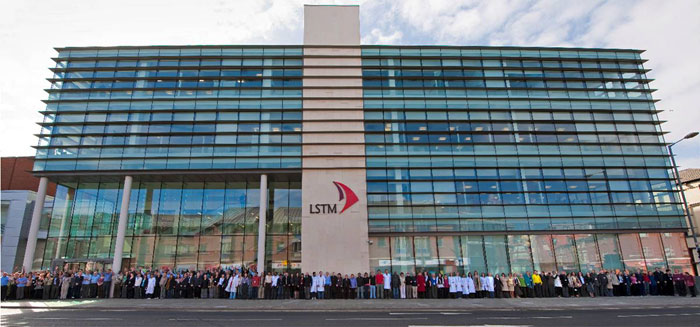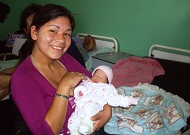5.48 pm January 15th: House of Lords Debate on Maternal and Neonatal Health in The Developing World.
My Lords, we are all greatly indebted to my noble friend Lady Hayman for instigating this debate and for the way that she introduced it.
As she told us, my noble friend is chair of the external advisory group of the Liverpool School of Tropical Medicine’s Centre for Maternal and Newborn Health. Her work for the school has given it very great encouragement. For more than 30 years I have been privileged to be associated with the work of the school and serve as an honorary vice-president. The centre designs and implements innovative healthcare packages, and offers unique expertise in research and in developing evaluation frameworks. It works collaboratively and strategically with Governments and global agencies, saving the lives of women in countless countries, along with the lives of their babies.
Professor Nynke van den Broek, who is head of the Centre for Maternal and Newborn Health, graphically sets out the scale of the challenges that face developing countries in reducing maternal and neonatal mortality. She says that an estimated 300,000 women die each year from complications in pregnancy and childbirth and—as the noble Baroness, Lady Tonge, said a few moments ago—this represents a decline. The school says it is about 45% overall since 1990. However, this should not lead us to any kind of complacency because it still equates to a woman dying every 90 seconds or 800 women a day. There are also at least 2.6 million stillbirths every year and an additional 2.9 million neonatal deaths. At least 43% of deaths in children under five occur in the first month of life.
The World Health Organization says that 99% of all maternal deaths occur in developing countries. Inevitably, this loss of life is at its most acute in rural areas and—as the right reverend Prelate the Bishop of Derby said—in poorer communities. UNICEF reminds us that more than 50% of women still deliver without the assistance of skilled health personnel, with 80% of maternal deaths caused by direct obstetric causes. Pivotal to addressing this shocking and avoidable loss of life is the challenge of improving the health and nutrition of mothers and providing access to good-quality support services for mothers-to-be and newborns, before and after birth.
At a personal level, two decades ago I was struck by what a difference those factors could make. While working in Namibia, my sister gave birth to my niece at 32 weeks’ gestation. My niece weighed less than two pounds and no baby as small as that had previously survived in Namibia. I was told that important to her survival was her mother’s breast milk and the antibodies it contains, but obviously she was too small to be able to suckle. There was no electric breast pump available at the hospital. I was able to buy one and ship it out. How different the outcome would have been if she had been living in the bush or a remote village without access to resources. That is surely the challenge we have to address.
Consider this tale of two countries: 2013 data highlight UK maternal mortality rates as standing at eight deaths in every 100,000, with three neonatal deaths for every 100,000 live births. By contrast, in Zimbabwe—visited by my noble friend—there are 470 maternal deaths in every 100,000 and 39 neonatal deaths for every 100,000. The vast majority of stillbirths, newborn deaths and maternal deaths occur around the time of birth and in developing countries. Ultimately, the health and survival of babies depends on the health and survival of mothers and that requires resources.
It has, of course, been crucial that millennium development goals 4 and 5 have helped to shape the agenda for action to improve these health indicators. That progress has been made is borne out in the report Financing Global Health 2013 from the Institute for Health Metrics and Evaluation. It noted a welcome increase of nearly 18% in development assistance for maternal, newborn and child health. Although I join others in congratulating DfID on the role it has played in this, nevertheless the spending per live birth remained at just £32 per child.
Even where death does not occur, failure to provide resources and care at this crucial moment in a woman’s life can have, as we have heard, long-term consequences. For each maternal death, an estimated 20 to 30 women live but suffer lifelong morbidity including fistula, which my noble friend Lord Patel has done so much work to tackle and was mentioned by my noble friend Lady Hayman. In addition, there is chronic infection, anaemia and infertility. The Liverpool School of Tropical Medicine is currently working with the World Health Organization to develop new tools to provide more detailed data—something that DfID might want to support.
Improving the availability and quality of data helps to capture and understand the reasons for maternal and neonatal deaths, and to develop the necessary initiatives to prevent deaths. Digging deeper into the currently available statistics, it starts to become clear where we should concentrate our resources and our efforts. Baseline surveys under the Liverpool School-led and DfID-funded Making it Happen programme show that across 11 countries early newborn care packages are simply not consistently available.
Out of 749 hospitals and health centres, only 173 were able to provide the required emergency obstetric care package, which is 23.1% or less than one in four. A study of reasons for unavailability of the care package shows that in 17% to 75% of cases there was lack of functioning equipment; in 13% to 17% of cases the reason was lack of a staff cadre—doctors or senior midwives—able to lead the team or provide the more technical aspects of care; and in 2% there was a reported lack of drugs. Not surprisingly, then, sub-Saharan Africa accounts for 62% of all maternal deaths, followed by south Asia with 24%.
As my noble friend Lord Patel reminded us, two countries stand out: Nigeria and India. India accounts for 17% and Nigeria 14% of the total. The right reverend Prelate told us of his experiences in India.
India is is one of the world’s greatest nations, yet in its treatment of women, from conception to death, India justifies its title as the land of paradoxes. A 2012 report by the United Nations Department of Economic and Social Affairs found that the ratio of boy to girl deaths is severely skewed. Between 2000 and 2010, 100 girls aged one to five died for every 56 boys. Putting that into plain language, an Indian baby girl is almost twice as likely as an Indian boy to die before the age of five, and the problem seems to be getting worse. In 1961, 976 girls were born for every 1,000 boys, and in 2011 that number was 914. The horror stories that have filled Indian papers, describing bodies of baby girls decomposing in heaps by refuse pits or being discovered in their scores in rubbish bins, should rouse our consciences, and I should like to hear from the Minister when we last raised this issue with the Government of India.
Another country that stands out and, because of Ebola, is much on our minds is Sierra Leone. It is estimated to have the highest ratio of maternal deaths, with 1,100 per 100,000 live births. This estimate was made in 2013 and the situation then was bad enough, but obviously, with the inevitable decline in the infrastructure in Sierra Leone today, the situation is getting worse. I hope that the Minister will be able to say something about that.
Are we involved in the formulation of new development goals to ensure continued global advocacy and to ensure that action is under way? A proposed new goal is universal health coverage. Surely a universal gold standard, strengthening health systems worldwide and ensuring that care for mothers and babies is available, accessible and affordable, is one that the United Kingdom should be championing.
As we look at best and worst practice, do we ask what was done well, what was not done well, how care can be improved in the future and how much involvement there is of users and providers? Are we working to see the better development of perinatal audit and cause classification for maternal deaths, and the introduction of an urgently needed system to identify the cause of, and contributing factors to, stillbirth? I hope that my noble friend’s initiative today will help us to achieve some of those life-saving objectives. I am indebted to her for giving us the opportunity to contribute to this debate.
——————————————————————————————————————————————————————-
Also see: India has earned the dubious honour of being the worst G20 country to be female (if they make it out of the womb alive, that is).
http://www.bbc.com/news/world-asia-india-20863860
India also lacks midwives: http://www.who.int/bulletin/volumes/86/4/07-048454/en/
By contrast Nepal has focused on tackling the issue with spectacular results ( see first 2 paras):
The presence of midwives and their ability to refer women to hospital at the appropriate moment is clearly a big factor in the MDG’s improved statistics on maternal mortality & infant mortality.
http://www.popcouncil.org/uploads/pdfs/SafeMom_TBA.pdf





